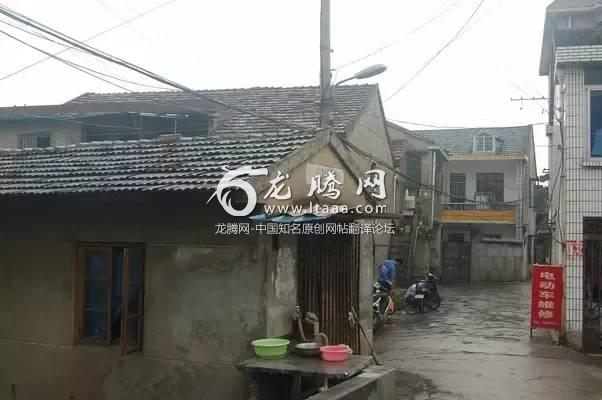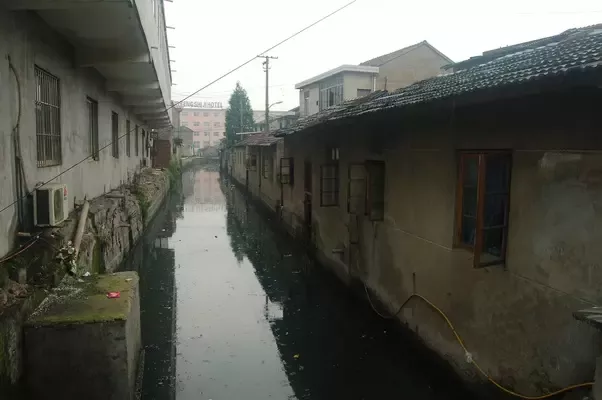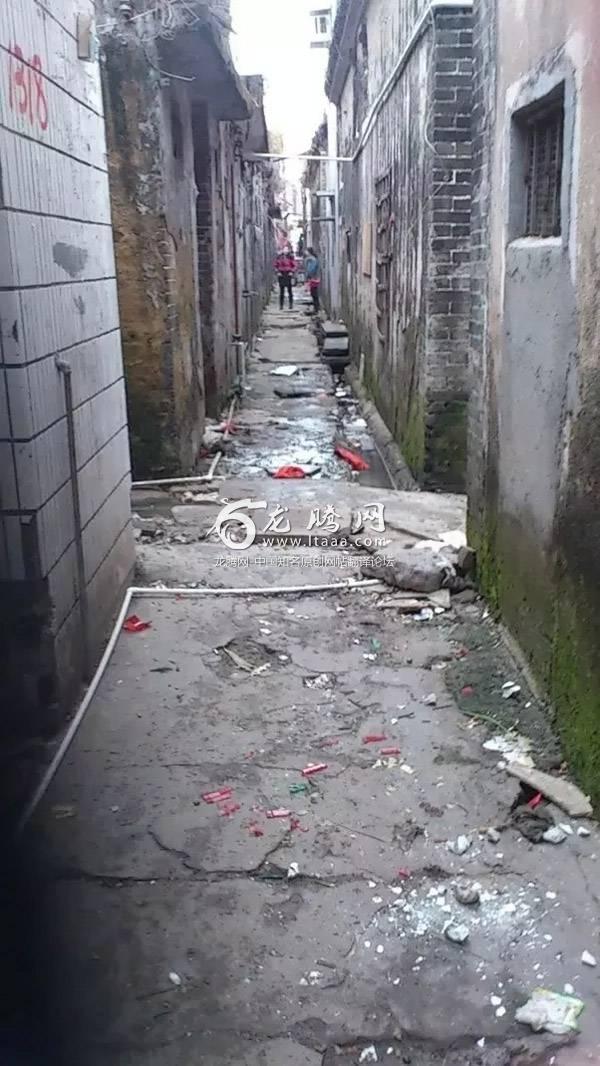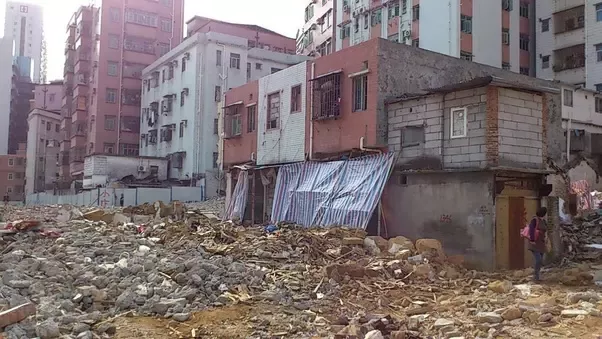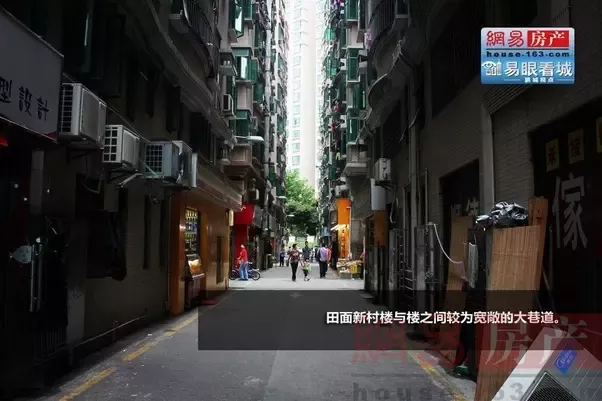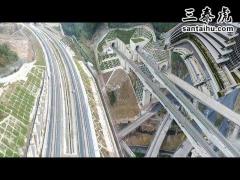中国有贫民窟吗? [美国媒体]
quora网友:中国的成就已表明,这些贫民窟在一开始就没有必要被创造出来,或者继续存在在现代社会中。 中国政府了解下村-维纳宏观经济学,并且明白利用中国人民银行和各省的人民银行分行,(中国政府)可以创造无偿信贷,从而为每年创造二十个一百万人以上的新城市,以及根据需要重建许多中国的主要城市提供了资金。
-------------译者:菊花与枪-审核者:龙腾翻译总管------------
re there slums in China?
中国有贫民窟吗?
原创翻译:龙腾网 http://www.ltaaa.com 翻译:翻译加工厂 转载请注明出处
-------------译者:penender123-审核者:龙腾翻译总管------------
George Tait Edwards P.h.D. Integration of Shimomuran With Wernerian Macroeconomics University of Southampton (2020)
Answered Mar 25
(译注:这位爱德华兹博士是”整合下村-维纳宏观经济学“的鼓吹手。甚至自己在Quora提出”什么是整合下村-维纳宏观经济学”之类的问题然后自己回答。译者并不是说他的回答没有道理,只是想提醒读者,这个“下村-维纳宏观经济学”的名词很可能就是此君自造的。)
Yes but the vast slum cities in the rest of the developing world don’t exist in China.
有的,但是像其他发展中国家那样的大片贫民窟在中国并不存在。
Most economic development has involved the creation of vast slums as the population drifts from the countryside to the cities in search of work. You can see in the favelas of South America and in most of the developing world the massive slums usually centered on major cities. One interesting and informative book about this is Mike Davis’s “Planet of Slums” Verso London and New York 2006 which describes in encyclopaedic detail the creation and persistence of slums in most of the developing world. The title of that book is based upon Davis’s belief that slums cover the whole planet. They don’t.
多数情况下,经济发展会导致人口从乡村向城市流动以寻找工作机会,从而制造出城市大片贫民窟。你可以在南美洲的贫民窟和大多数发展中国家的大城市中看到大片这样的的贫民窟。有一本对这方面记载详实且有趣的书是迈克·戴维斯所着的《贫民窟星球》, 于2006年发行于伦敦和纽约。此书对大多数发展中国家贫民窟的产生和存在进行了百科全书式的描述。 这本书的标题来源于戴维斯的认知,他认为贫民窟覆盖了整个星球。(然而)这(种认知)并不对。
As China has demonstrated there is no need for these slums to have been created in the first place or to persist in modern times. The Chinese Government understands Shimomuran-Wernerian Macroeconomics and knows that no-cost credit creation can be created by the People’s Bank of China and by each of the Provincial PBoC’s in order to fund the creation of twenty new cities of a million people each year plus the rebuilding of many of China’s major cities as required.
中国的成就已表明,这些贫民窟在一开始就没有必要被创造出来,或者继续存在在现代社会中。 中国政府了解下村-维纳宏观经济学,并且明白利用中国人民银行和各省的人民银行分行,(中国政府)可以创造无偿信贷,从而为每年创造二十个一百万人以上的新城市,以及根据需要重建许多中国的主要城市提供了资金。
-------------译者:C先生-审核者:龙腾翻译总管------------
China is unique in the culture of the world because it has now constructed 340 new cities with a final planned population of about a million people each since the year 2000. Some mistaken members of the Western Press have called these “ghost cities” but these reports fail to discriminate between the dying city areas of the West (such as Detroit and Precinct 75 in New York) and the recently born coming-to-life partly-occupied cities of China. A good corrective to these views can be seen at:http://blogs.reuters.com/great-debate/2015/04/21/the-myth-of-chinas-ghost-cities/
中国在世界文化中是独一无二的,因为自2000年以来,它已经建造了340个新的城市,每一个(城市的)最终规划人口数大约为100万。有些西方媒体误报称这些城市为“鬼城”,但这些报告未能区分出西方的频死之城地区(如底特律和纽约第75分区)和中国近来新生、复苏和部分被占领的城市。对这些观点的一个很好纠正在这个链接中可以看到:
http://blogs.reuters.com/great-debate/2015/04/21/the-myth-of-chinas-ghost-cities/
Wade Shepard who has lived in China for decades has an excellent book on this subject:
曾在中国居住过几十年的韦德·谢帕德(Wade Shepard)写过一本关于这个问题的优秀着作:
The Story of Cities without People in the World's Most Populated Country (Asian Arguments): Amazon.co.uk: Wade Shepard: 9781783602186: Books
《那些存在于世界人口最密集的国家却无人人居住的城市的故事(对亚洲的争论)》:亚马逊:韦德·谢帕德
(上述标题为副标题,该书名为Ghost Cities of China)
And it should be noted that virtually all of these cities that were advertised as “ghost cities” are now being populated:
值得注意的是,几乎所有被宣传为“鬼城”的城市人口都很密集:
Chinese Ghost Cities Coming to Life
中国的鬼城苏醒了。
Where Chinese slums exist they are much smaller old buildings that have not been taken over by the construction companies and they have been left there as temporary housing for construction workers. These are the only true slums in China and these areas are sure to be taken over and developed once the city construction is complete.
在中国的贫民窟中,有许多低矮的没有被建筑公司接管的老旧建筑,它们被留在那里作为建筑工人的临时住房。这些(建筑)才是中国真正的贫民窟,一旦城市建设完成,这些地区肯定会被接管和发展起来。
-------------译者:爱国的张姓屁民-审核者:龙腾翻译总管------------
Paul Denlinger Have lived in China Taiwan and Hong Kong; fluent in Mandarin (written spoken)
Answered 18h ago
Originally Answered: Why are there no slums in China?
Because they are not allowed and municipal officials are held accountable to prevent them from forming.
最初的问题是:为什么中国没有贫民窟?
因为这是他们(中国)所不允许的,市政官员要对此负责,避免它们(贫民窟)的形成。
Chinese cities have low-income housing but the buildings are not allowed to degrade to the point where they become slums. Buildings which are 20–30 years old are frequently torn down and replaced by newer buildings.
中国城市里有一种低收入住房,但这些建筑物还不至于被降级到(能形成)贫民窟的地步。(并且)有20-30年历史的老建筑常常会被拆除,由新建筑楼取而代之。
In order to have slums you need old buildings. In most Chinese cities the only old buildings which are allowed to exist only stand because they have historical status.
为了要(形成)贫民窟,你需要有老的建筑物。(然而)在中国大多数城市里,唯一被允许存在的老建筑物,(也只)是因为其具有的历史地位(意义)。
Terry Kang studied at University of Toronto
Answered Jun 22 2014
Disagree with answers above.
(我)不同意上面的观点。
城中村(villages that encircled by urban space) just has the same environmental conditions as slums in other countries.
城中村(被城市所包围的乡村)就与其他国家的贫民窟环境条件相同,
However the social essence is totally different.
然而(中国的城中村与其他国家的贫民窟)社会本质却是完全不同的。
For slums they appears during the urbanization. ( due to the increasing gap between rich and poor urban poor has to live in places with poorer conditions. And the places like that are called slums)
这些贫民窟是在城市化进程中产生的(由于贫富差距越来越大,城市里的穷人不得不生活在较差的环境条件下,像这样的地方,就被称作贫民窟)。
For chengzhongcuns in China they are villages originally exist around the limited urban areas during the process of suburbanization and urban sprawl( urban expantion) the villages then have to be surrounded by urban boom. That's the process of how chengzhongcuns form.
至于中国的城中村,它们是在市郊化和城市扩张(城市膨胀)过程中,最初位于城市周边有限地区的村庄。最后,这些村庄不得不被城市(建设的)热潮所包围。这就是城中村形成的过程。
-------------译者:非命-审核者:龙腾翻译总管------------
Don Johnson,我在中国生活过很久
Answered Apr 17 2014
Yes but not nearly as many as in other large developing countries.
是的,但不如其他大型发展中国家那么多。
Huge areas of informally built housing on the edges of cities that aren't served by utilities or public services like you see in India Brazil and Africa basically don't exist in China. However there areas in many Chinese cities called "城中村" meaning villages in the city which are slums: very crowded very poor infrastructure (single water taps serving hundreds of people no sewage treatment) few or no parks open spaces schools or hospitals. They are almost completely populated by migrant workers.
城市边缘内有大片随意搭建的房子,那里没有基础设施也没有公共服务,那种在印度、巴西、非洲常见的景象在中国基本上是不存在的。不过,在中国许多城市有一种地方叫做“城中村”,意思就是指在城里的贫民窟:那里拥挤;基础设施破旧(一个水龙头供几百个人用,没有污水处理);公园、开放场所、学校和医院很少,或者说根本没有。在那里的居民基本上都是外来务工人员。
These places are former villages that have been swallowed up by expanding cities. The former villagers usually live elsewhere in the city and are now landlords renting out their old houses to migrant workers who need a very cheap place to stay. One big difference between these areas and typical developing world slums is that most people that live in them are employed and don't consider themselves permanent residents. They also don't have the culture that slum areas in other countries have despite their poverty - more like temporary very cheap worker housing.
这些地方原本是村庄,后来因城市的扩张而被吞没。从前的村民通常都会搬去市中的别处居住,他们做起了房东,将自己的旧房子租给了那些需要低廉住所的外来工。城中村和其它发展中国家典型的贫民窟相比有一个很大的不同在于,居住在这里的很多居民都是雇佣工,他们并没有久居的想法。这里没有产生像其它国家的贫民窟文化,尽管他们都很穷困——用廉价工人的住所形容城中村更为贴切。
Many Chinese cities have made it a priority to demolish "villages in the city" and rebuild the areas with better quality. The problem is that this eliminates badly needed low-cost housing for migrant workers; replacement housing usually is more expensive even if affordable housing is included.
中国许多城市以消灭“城中村”,改造城中村作为优先事务。问题在于外来工对廉价居所的强烈需求。不管新建的住房多么便宜,总是贵过老房子。
Former village area in Ningbo
宁波从前的村庄地区。
-------------译者:ygytnt1001-审核者:龙腾翻译总管------------
Anonymous
Answered Apr 17 2014
Yesthere're slums in China.
But you don't get to see them often in the centers of Chinese cities because it's simply not allowed.
So most of these so called slums scatter around the outskirts of the citiesand in a much much more smaller scale compared to those in other developing countries.
是的,中国有贫民窟。
但是你在中国城市的市中心并不常看到它们,因为它们属于违章建筑。
所以大部分所谓的贫民窟都分散在市郊地区并且其规模也远比其他发展中国家的贫民窟小得多。
However with the cities expanding so fast that many urban villages have became strongholds for the those coming from the rural areas looking for a better life (we don't call them slums Although they ARE slums).
然而由于城市扩展迅猛,这些城中村就成了那些进城务工人员奔向美好生活的据点。(尽管我们不叫它们贫民窟但那就是贫民窟。)
From a positive aspect they provide living space with low rents to people and introduce new workforces to the cities.But from another angle the living facilities in the urban villages are sometimes very poor and don't catch up to the needs sanitation has become a great concern.What's more they are breeding social problems such as crime drugsprostitutionit's quite a headache to the cities.
从好的方面看,这些房租低廉的(城中村)为(外来务工)人员提供了住处,同时为城市带来了新的劳动力资源。但不好的是这些城中村的生活配套设施非常有限且不足,满足不了群众的需要,卫生状况也不容乐观。更要命的是这里也滋生了很多社会问题,如犯罪、毒品、娼淫等社会顽疾。One picture speaks more than a thousand words.
有图有真相(图片比文字更有说服力)。
Here's a photo I took in 2012Huangbeiling villagesingle story housescenter of Shenzhen city20mins away from HongKong.Those girls standing there were prostitutes.
这是我2012年在离香港只有20分钟车程的深圳市黄贝岭城中村拍摄的照片。那些站着的女生就是妓女。
Now the Shenzhen government is taking a great effort to put these villages into reconstruction.
现在深圳市政府大力推进这些城中村的重建工作。
These are what the above looks like now.
这是上图现在的样子。(译注:此评论发表于2014年4月17日)
Now let's take a look at a successful showcase after the reconstruction project(Tianmian VillageShenzhen).
现在来看一个成功重建的项目案例。(深圳田面村)
Well of course with no doubt the rents will go higher after reconstrutionbut it's still acceptable for most peoplewhile the rest have to think about moving to a new placeafter all it's hard to take care of everyone.
毫无疑问,重建后租金肯定是涨了。但大部分人还是可以接受的,剩下的也只好另搬住处。你无法安顿好所有人让大家都满意。
版权声明
我们致力于传递世界各地老百姓最真实、最直接、最详尽的对中国的看法
【版权与免责声明】如发现内容存在版权问题,烦请提供相关信息发邮件,
我们将及时沟通与处理。本站内容除非来源注明五毛网,否则均为网友转载,涉及言论、版权与本站无关。
本文仅代表作者观点,不代表本站立场。
本文来自网络,如有侵权及时联系本网站。
-
1
Why do most people who have a positive view of China have been to ...
- 2
- 3
- 4
- 5
- 6
- 7
- 8
- 9
- 10
-
1
Why do most people who have a positive view of China have been to ...
- 2
- 3
- 4
- 5
- 6
- 7
- 8
- 9
- 10
